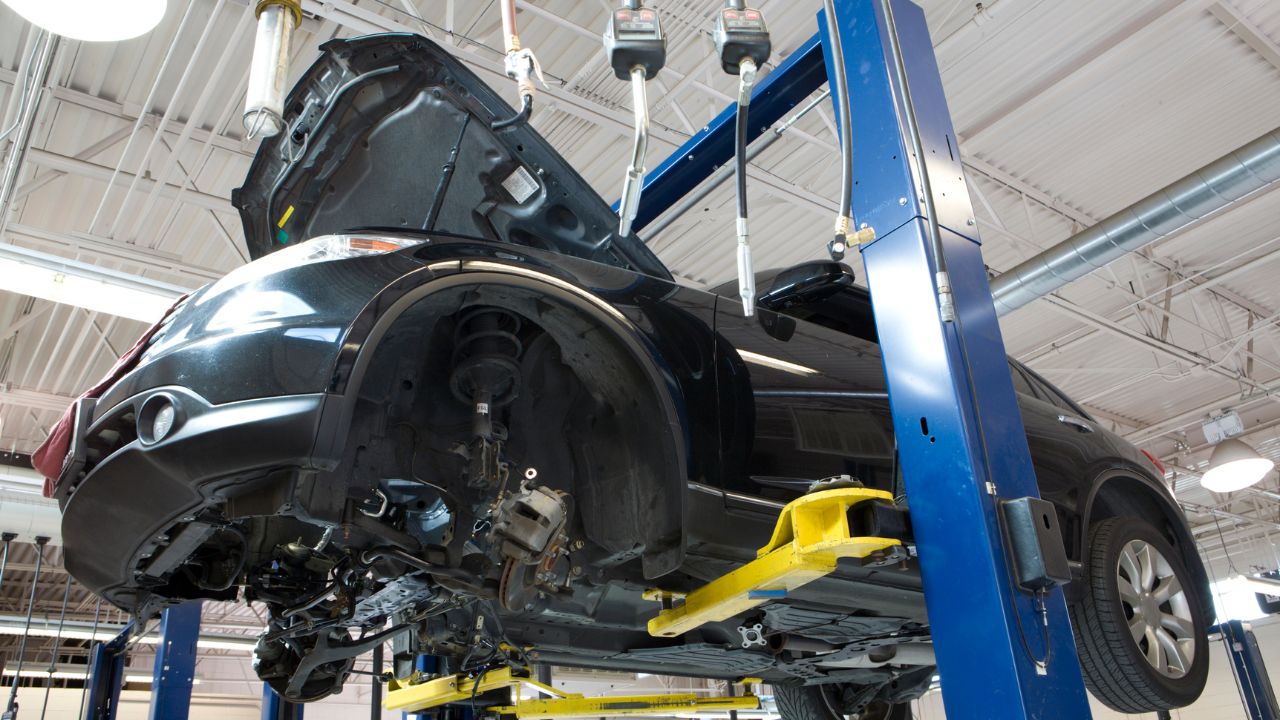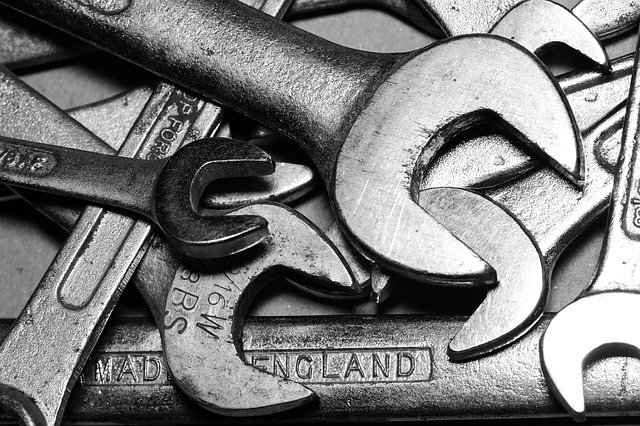
Technical service bulletins (or technical service bulletins) are documents issued to the manufacturer of original equipment vehicles. They explain common problems with specific models and provide recommendations for solving them. A bulletin may be issued by the manufacturer if the problem is not easily solved. Each year, automobile manufacturers release thousands of service Bulletins for various vehicle types. Most bulletins aren't seen by the average car owner.
Technical service bulletins
Technical Service Bulletins (TSB) are documents that outline recommended procedures for repairing a vehicle. These bulletins are issued by vehicle manufacturers when there is a sequence of unanticipated problems. Here are some of these TSBs that are most commonly used:

Tech Service Bulletins may be used to fix minor or major issues. To help their dealers, technical service bulletins can be issued by the automaker. Although these bulletins do not address as many issues as recalls, they can be helpful and provide repair instructions. They list the required parts and include the labor cost. These bulletins are available for download from the manufacturer's site.
Directives concerning airworthiness
Airworthiness Directives within Service Bulletins are often required by aircraft owners and operators. The benefits of adhering to these directives might outweigh their costs. Aircraft owners will need to conduct a cost-benefit analysis before implementing new service bulletins. The following are guidelines for compliance with Airworthiness Directives in Service Bulletins. Below are examples of these directives.
Service bulletins are issued by manufacturers to alert aircraft owners of safety improvements. You can choose to ignore the manufacturer's instructions or follow it, but it is important to follow their recommendations. Manufacturer's recommendations are the best way for you to learn about trends and faults. These bulletins can also be issued by manufacturers to help aircraft owners and mechanics identify and fix items that are more likely to fail than anticipated.
Manufacturer recalls
Manufacturers send out a service bulletin informing consumers about potential problems with cars. The bulletins are issued to give owners and dealers sufficient time to fix the problems. These bulletins provide owners and dealers with information and parts that can be used to fix a recalled vehicle. While automakers are not required by law to publish service bulletins via their websites on their website, they must be made available to the affected customers. Dealers can't fix defects in cars that were purchased before the recall date unless the vehicle is brought to the dealership.

Technical service bulletins are issued when there is a problem with a particular model. This could be a problem with a particular model's power door lock or starter, or even a poorly installed floormat. Many bulletins provide instructions on how to fix the problem. These bulletins can also list the cost of parts and labor. This information is essential for the safety of your vehicle and its maintenance.
FAQ
What are the basics of car mechanics?
For an auto mechanic job, you don’t have to be an expert in cars. Only you need to know how things work. It's why many people begin to fix things by fitting brake pads or changing tires.
You'll need the ability to read and understand diagrams and to follow simple rules of good practise. It is also important to know how to determine if parts are damaged or need to be replaced.
It's important to remember that you shouldn't attempt to repair vehicles without having received proper training and guidance. This is especially important if you work with expensive parts such as transmissions or engines.
Although you won't be required to know much about cars you should have a solid understanding of the fundamentals and principles of mechanical engineering. This means understanding the principles behind how engines work and how brakes function.
It is important to realize that you must be ready for all types of situations. For example, you may find yourself working on a vehicle that has been involved in a serious accident. You will also need to be able to deal with accidents and breakdowns.
You must also be willing to learn quickly. In order to be able diagnose and fix problems, you will also need to know how to do simple maintenance tasks such tightening bolts.
What qualifications are necessary to become a mechanic
To become a mechanic, you'll need to pass a series of exams. These exams include:
-
A general knowledge assessment
-
A practical examination
-
An apprenticeship test
These tests are designed to ensure that you understand the basic concepts of mechanical engineering and physics before you start working as a mechanic.
These tests will allow you to be a mechanic once you have passed them. You will still need to complete an apprenticeship. This will involve training in the trade.
To learn all there is to know about fixing vehicles, you will need workshops and classes. Working alongside skilled mechanics is also a must.
A mechanic must be highly focused and attentive to detail in order to succeed. You will need to pay careful attention to every aspect when repairing vehicles.
You'll need patience and persistence to become a successful mechanic. If you don’t like following directions, then this career path may not suit you.
This job is for you if you are passionate about cars and love fixing them.
What's the difference between a mechanic and an automotive technician?
These two jobs are very similar but not identical. A mechanic repairs cars while an automotive technician does maintenance on them.
A mechanic must be skilled in manual dexterity and able to complete simple tasks quickly. They must also be able to diagnose problems accurately and repair them effectively.
An automotive technician needs to be more technically skilled than a mechanic. They must be able and able to read blueprints as well as use tools like drills or wrenches.
They should also be capable of safely performing complex procedures. They must be familiar with all types of electrical and engine systems.
They must also be capable of understanding how parts interact.
This means that mechanics usually make less money than automotive technicians. Both jobs offer many possibilities.
Is it worthwhile to become a mechanic?
The answer to this question will depend on your goals for life. If you are looking for financial gain, then yes. However, if purpose and meaning are what you seek, then no.
You don't need to be a mechanic if you don't know how. You won't become rich from it. It's unlikely that you will be famous. It is unlikely that your life will change.
You would need to spend years learning how to do everything properly. Then you'd still have to pay someone else to fix your car when it breaks down. Most people avoid doing this. They find something they enjoy instead.
Let's sum it up: If you want to make a lot of money, then do so. The mechanic's profession is not the right place for you if it means that you will live a fulfilled life.
Does it matter where I go to college?
It's not true. In terms of getting into the auto industry, there is no distinction between colleges. But, there are better programs at some schools than others. Look elsewhere if you want something more niche.
What is the average time it takes to become a mechanic?
Expert mechanics take years of practice and extensive experience. The best way to learn how to repair cars is by working under the supervision of a professional mechanic.
You will have to spend time in a garage learning about cars and mechanics. It is important to get familiar with the mechanics of cars and engineering.
Furthermore, you'll need to enroll in auto school.
It's crucial to start as soon as possible. Do not wait to learn automotive technology. Do you want to be a mechanic? Get started today!
Statistics
- According to the BLS, the median annual salary for automotive service technicians and mechanics in the United States was $44,050 in May 2020. (uti.edu)
- The U.S. Bureau of Labor Statistics (BLS) reports that the job outlook for automotive service technicians and mechanics is expected to decline by 4% from 2019 to 2029. (indeed.com)
- Apprentice mechanics earn significantly less hourly than mechanics who have completed training, with a median wage of approximately $14.50 an hour, according to PayScale. (jobhero.com)
External Links
How To
How to diagnose your vehicle properly for repair
You should first examine the symptoms your car is showing to determine if it requires repairs. Follow these steps to properly diagnose your vehicle.
-
Check engine lights. Check the dashboard light indicators such as the engine light indicator, the oil pressure gauge, the battery light indicator, the coolant temperature gauge, and the RPM gauge. If any of these indicators have been flashing continuously for several days it could mean that there is something wrong with your vehicle.
-
Pay attention to the treads on your tires. If the tires are worn out, they could cause problems with handling and braking. The treads of the wheels should be inspected as well. You should ensure that they are clean and smooth. This can be done by removing the wheels from the vehicle and taking them off. A flashlight can be used to check how worn the treads are.
-
Check the level of brake fluid. You must keep track on the level of brake fluid in your vehicle. This will ensure that your brakes run smoothly. Your brakes may fail if the brake fluid level drops.
-
Make sure to test the suspension system. Most vehicles have a suspension system that absorbs shocks and vibrations. This suspension system provides greater control and smoother acceleration and deceleration. If your vehicle has a suspension problem, it might feel wobbly or shake uncontrollably. If you are unsure if your vehicle is suffering from a suspension problem, put weight on the front and rear axles to check the movement.
-
Examine your steering column. Steering columns connect the steering wheels to other parts of the vehicle. Sometimes, steering columns are damaged by accidents. You should replace the steering column if it is loose or weak.
-
Observe the exhaust pipe. The exhaust pipes transport gases from the combustion chamber to outside. If your exhaust pipe leaks or cracks, it will allow harmful fumes into your cabin. It is also important to repair any bends in your tailpipe immediately.
-
Check under the hood. If you see anything unusual, take a look under the hood. Your engine could be leaking fluids. Also, professional technicians should be called if you detect an unusual smell coming out of your engine compartment.
-
It is important to inspect the air filter. The outside environment can collect dust and other debris in your vehicle's air filters. Dirty air filters can cause your vehicle to run poorly. Replace your air filter regularly.
-
Make sure you check the fan belt. The fan belt that connects your vehicle to the transmission is called the engine fan belt. If the fan belt fails, the engine won't start. The process of replacing the belt is straightforward. All you need to replace the belt is a screwdriver with pliers.
-
Verify the radiator hoses. The radiator hose transports water from radiator to engine. If it becomes cracked or damaged, it can leak hot liquid onto the engine. To repair the hose, you will only need to use a pair needle-nosepliers and a wire brush.
-
You should inspect the windshield wipers. Windshield wipers work by using electricity to remove rain and snow. They can leave streaks on your windows glass if they stop working. You can fix the problem by changing the washer fluid.
-
Make sure you check the cables. Your car's electrical system is powered by batteries. If you are replacing batteries, disconnect the negative cord first. Failure to do so can damage your alternator.
-
Be sure to check your headlights. Headlights help you see the road ahead. If they don't work properly, it can cause poor visibility. To determine if your bulbs are out of date, check them.
-
Always check your lights. You can warn other drivers if you approach them at night. One that doesn't work could cause you to be distracted, and possibly lead to an injury.
-
Check the brakes. Brakes slow down your vehicle before a collision. You could lose control of the car and cause a crash if they don't work properly.
-
Make sure to change the oil. Your engine will stay lubricated by the oil. It prevents metal parts from rusting too quickly. It is recommended that you change your oil at least once per month.